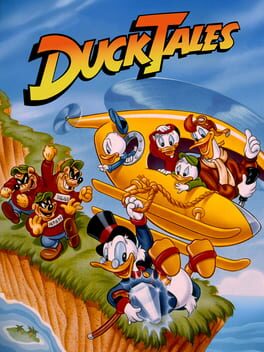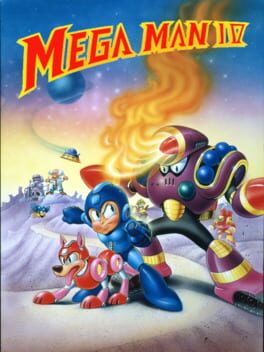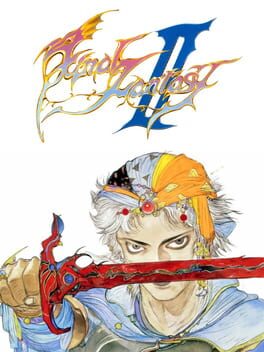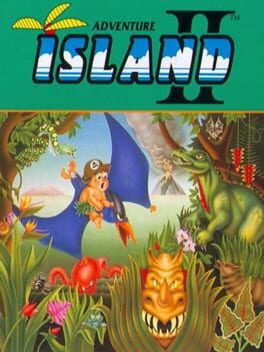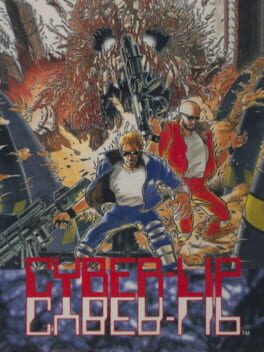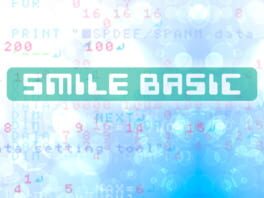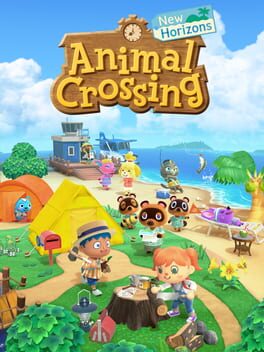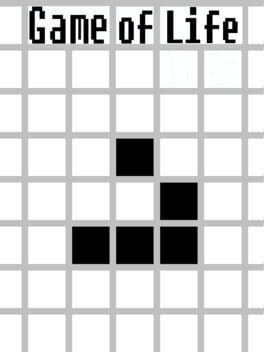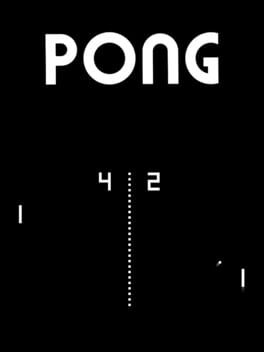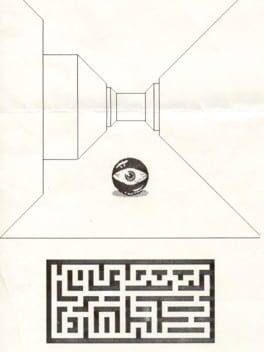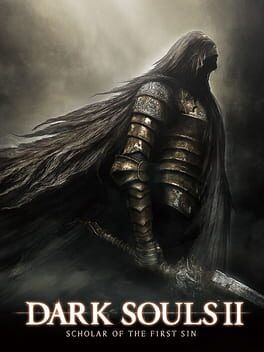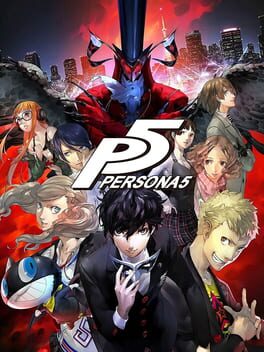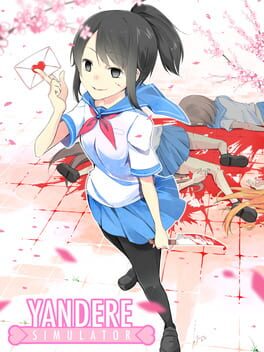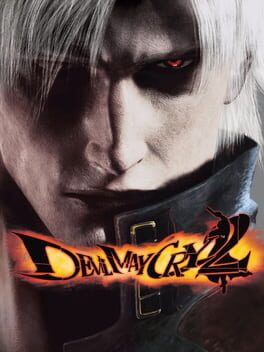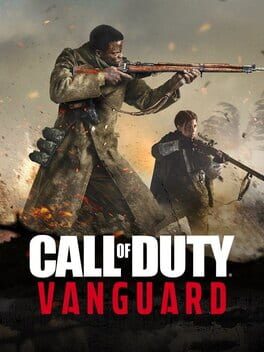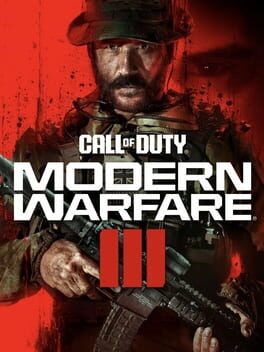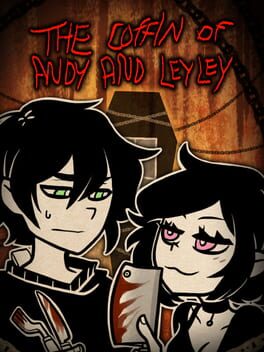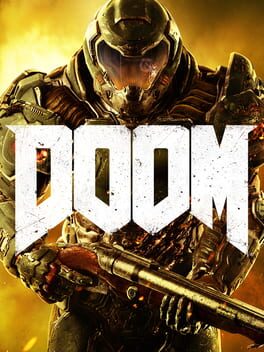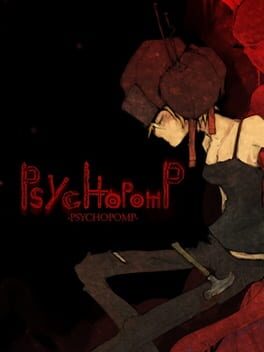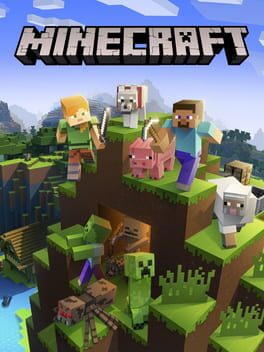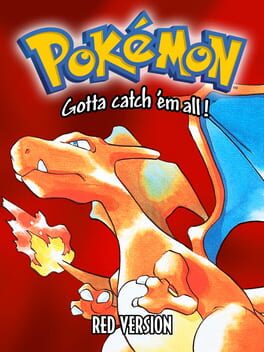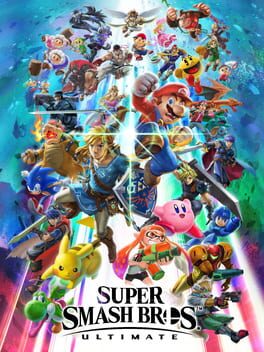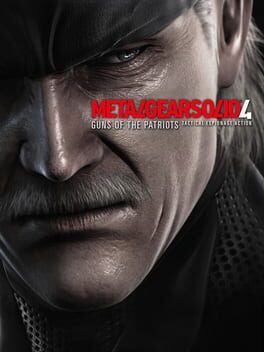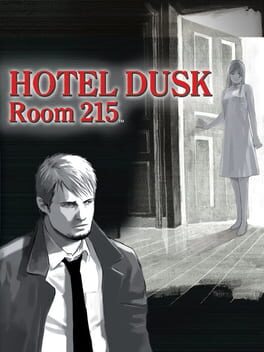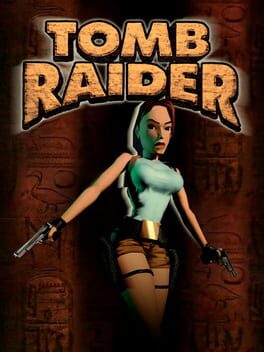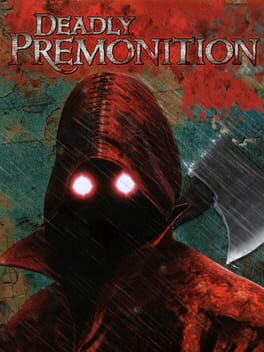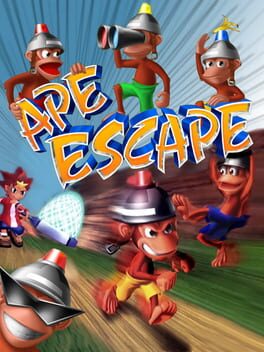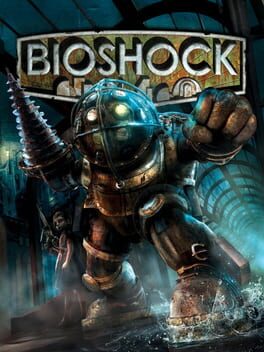MegaTheRealOne
BACKER
39385 reviews liked by MegaTheRealOne
Disney's DuckTales
1989
Mega Man IV
1993
So, it’s been a while, huh? The last review I posted on this website was my Owl House: Witch’s Apprentice review over a week ago, and since then, I kinda fell out of playing and reviewing games, especially since continuously attempting and failing HaraHara in Puyo Pop Fever over and over again was kind of starting to wear on my mental health. So I decided to take a brief break from playing games and worrying so much about making another review. However, on a whim, I decided I wanted to get back into making these reviews and knocking games off my backlog, so what better game to do so than with a really short one? As you can already tell, that game is none other than Mega Man IV… uh, no, not the NES one, the Game Boy one. Yeah, so all of the Mega Man games on Game Boy have abhorrently bad names in the US, so for the sake of not making it too confusing (especially since I’m going to be mentioning Mega Man 4 on NES a few times in this review), I’m going to refer to this game as Mega Man World 4 (or MMW4 for short) from here on. I remember getting Mega Man World 4 on the 3DS eShop after hearing that it was one of the better Gameboy Mega Man games (alongside Mega Man World 5), but I never really got to sit down and play it until recently. And after finally finishing it, I gotta say, for a Gameboy Mega Man game that remixes levels from the NES ones, it still manages to hold its own identity and plays really well, even if it has some strange flaws.
The first part of this game I’d like to discuss is the level design, possibly one of the most important aspects in making Classic Mega Man so good. But before I do, I’d like to really quickly discuss the gist of the Mega Man World games, as this’ll be pretty important when discussing Mega Man World 4’s levels. For those who don’t know, until Mega Man World 5, the Gameboy Mega Man games used remixed levels from the NES Mega Man games, usually with an original boss character near the very end. For example, Mega Man World 4 uses remixed levels from Mega Man 4 and 5 for its main levels, and after you beat all of them, you get to face Ballade before taking on the Wily stage. I often see people mention this as a detriment towards the Game Boy Mega Man games, but I personally didn’t mind this, as (at least for Mega Man World 4), the levels still feel really unique from their NES counterparts. I can’t comment much on the Mega Man 5 levels as I actually have yet to play that game, but as someone who’s played Mega Man 4 a billion times, the levels from those games still felt really fresh and new to me. Part of this comes from the fact that these levels usually opt for new gimmicks to be added to the stages, such as rising platforms for Bright Man’s stage, platforms you can shoot in Crystal Man’s stage, etc. But even with the levels that don’t introduce new gimmicks, they still feel unique because they’re using these familiar level concepts in completely new ways. It also helps that these levels are really fun as well. Hell, I prefer some of these Mega Man 4 levels over their NES counterparts, mainly Pharaoh Man and Toad Man’s stages in particular. A lot of the Mega Man 5 levels also feature branching paths, which is an inclusion I always enjoy from classic Mega Man and makes these levels all the more replayable. Overall, these levels are just generally really fun and well-designed, however, there are quite a few cheap sections that kind of plague the levels. These range from minor but annoying things like cheap enemy placements, to pretty deplorable game design decisions like not knowing to hold left before jumping down and then falling into a pit of spikes. The game also tends to suffer from pretty heavy lag, especially when you’re using a weapon like Pharaoh Shot or Rain Flush. Thankfully, the lag never caused any of my controller inputs to be dropped like in Mega Man 3, but the slowdown can still happen quite often. These issues can get pretty annoying, but they’re few and far between and they’re nowhere near enough to ruin the otherwise really fun level designs and creative concepts of the levels. My favorite was probably Napalm Man’s stage, not only due to the clever use of the gimmicks already present in that stage, but also for its cool original setpieces like the disappearing block paths and the fires that you can put out with Rain Flush. Environmental interaction before Mega Man 7? See, this is one of the many examples of how creative these levels can get. While none of these levels are like, super mind blowing or anything, they’re still really fun and feel really refreshing for a Gameboy game consisting of remixed NES stages. Alongside the original Wily stages and bosses, you can tell that this was the entry in the series where Minakuchi Engineering really wanted to make something original for themselves, as shown by the fact that a year later, they’d cook with Mega Man World 5, one of the most unique entries in the entire series to this day. All-in-all, the levels in Mega Man World 4 were just a really solid time all around and still felt new, even with the reused enemies and setpieces.
I mentioned how the new level gimmicks and the creative enemy uses made the levels feel more unique, but there are two more things that the developers added that made this entry feel fresh. One of which was the introduction of the P-chip system, which is sort of like a predecessor to the bolts seen in later games like Mega 9 and 10, where you collect them throughout your adventure and can spend them at the shop in between stages. Unfortunately, like in Mega Man 9 and 10, this system kind of leaves a lot to be desired. They suffer from the same problem as the bolts in those games where, aside from the Energy Balancer, you really only have E-tanks and Extra Lives left to buy, so if you’re like me and don’t really use E-Tanks, you don’t have much of a reason to come back to the shop or collect any more P-chips. Thankfully, Mega Man World 5 fixed this by adding a lot more cool stuff in the shop you could buy, like upgrades for your Mega Arm. As it stands though, Mega Man World 4’s P-chips are a cool idea in concept (hence why they’d be used again in later entries), but in execution, they could’ve been fleshed out a little bit more. Another element that Mega Man World 4 had that made it feel more unique is the collectibles. Well, I say it makes it feel more unique, but this idea was re-used from Mega Man 5, but in a slightly different way. In the Mega Man 4 levels, you can collect letters spelling “MEGA”, and just like in Mega Man 5, your reward for collecting these is the robot bird Beat, which I never used. Meanwhile, throughout the Mega Man 5 levels, you can collect letters that spell Wily, which… allow you access to Ballade and the Wily stages? I don’t know, that feels like kind of a weird requirement to be able to progress through the game, don’t you think? Eh, at least they aren’t too out of the way, so it’s easy to collect them all on your first try, but it’s still pretty weird to have some of your collectibles be required. Though, despite what it sounds like, I still very much appreciate the addition of these two features to the game, and they help even further in giving Mega Man World 4 an identity of its own.
Another thing that helps make classic Mega Man so good is its selection of special weapons. Mega Man World 4 has a pretty great weapon roster, though, part of that is kind of expected as half of its weapons come from Mega Man 4. Mega Man 4 genuinely has one of the best weapon selections I’ve seen in any game. Nearly all of them manage to be useful in some fashion and genuinely really add to the stages too. Likewise, the Mega Man 4 weapons brought over into this game are just as amazing as ever, with my personal favorites being Pharaoh Shot and Flash Stopper. Ring Boomerang kiiind of got nerfed as it can no longer pierce through shields, but the ability to pick up items from far away more than makes up for it. Even the Mega Man 5 weapons brought into this game are pretty decent, and the excellent Ballade Cracker is the icing on the cake. It’s an exploding weapon that travels fast, and can be fired in 7 directions, yet still manages to be more balanced than the Metal Blade. This weapon roster is just really solid overall. While not as good as base Mega Man 4’s roster, I still felt like the stages were very well built around the game’s weapon roster and they were pretty fun to use. Unfortunately though, as much as I’ve praised the Mega Man World 4’s levels and weapons so far, I really can’t do the same for the game’s main robot masters.
The bosses are another one of the three key factors in making classic Mega Man so great. I mean, they’re what stand between you and the special weapons you get to use, so they’ve got to put up a formidable yet fair fight. However, most of the time, NES Mega Man bosses tend to be… not great? A lot of the time, they typically don’t have much of a discernible pattern, typically relying on the player’s location or inputs (like most of the Mega Man 4 robot masters), and having insanely hard attacks to actually dodge, so the fight just kind of boils down to, “who can outlast the damage race”, rather than actually learning the bosses’ pattern. Other times, it’s WAY too easy, and their pattern is so easy to cheese that you can basically get out of the fight scot-free. From my experience, this felt like the case with a lot of Robot Masters in NES era Mega Man, and it wouldn’t be until Mega Man 7 onwards where Robot Masters and their patterns started to reach their full potential in my opinion. Sadly, the Robot Master fights in this game feel a lot more like the former than the latter, which I guess isn’t really the developers’ fault as they did have to port over these fights. They did change up a few fights from the NES ones a little bit, such as Ring Man firing his rings towards you, making the fight play out almost completely differently from NES Ring Man. I really wish they did this for a lot more of the Robot Master fights in this game, because a lot of these battles just never felt all that challenging or satisfying to me. They’re made even worse by the fact that the screen is so small. Mega Man World 5’s Robot Masters felt pretty well designed around this, but here it just makes the fights feel a lot more cramped than anything. Honestly, if I had to change anything about this game, these fights would certainly be it, because if they tweaked these fights a bit like they did with Ring Man’s fight, I think they could’ve been a lot more fun. However, there’s a lot of room for improvement with these fights, and this is especially true for the game’s special robot master, Ballade.
Look, I love Ballade as much as the next guy. He’s one of the coolest motherfuckers that classic Mega Man has ever introduced! But MAN, this fight just does not feel good to play against. If you’ve played Mega Man 10’s 3rd time attack stage like I have, it’s seemingly a lot like the fight in that stage, and in essence, it’s the same idea. Ballade lays down a bomb to watch out for, jumps towards your location around 1-4 times, runs towards your location, and throws a Ballade Cracker, rinse and repeat. It’s actually a good idea, and has been done quite well in Mega Man 10, but unfortunately, we’re not reviewing that game. We’re reviewing Mega Man World 4, where this seemingly pretty simple fight is butchered by a pretty terrible execution. I have a few problems with this. One of which is that Ballade will stop dead in his tracks whenever he reaches your location, which doesn’t sound too bad, but trust me, jumping over him when he does this is a hell of a lot harder than it looks. He’ll usually stop as you’re making a jump, so you end up just crashing into him and taking a shit ton of damage. Mega Man 10 mitigated this issue by having him run to the end of the screen instead of at your location, so you won’t get blindsided by him just suddenly stopping in his tracks. Speaking of which, another thing that Mega Man 10 has going for it is that Ballade’s fight just feels more natural in that game. There, you didn’t have to worry too much about the amount of jumps he did just because you could react to it quickly enough, But in a game where the screen is shrunken down and the physics are a lot more floaty, it feels like it just doesn’t work. Put all this together, and you’re once again left with a fight that feels like it just boils down to “win the damage race”, which sucks, because in concept and design, Ballade is incredibly cool, but his fight definitely needed some more time in the oven before coming out. After you do inevitably win the damage race, you can move on to the endgame, but before we do, I’d quickly like to discuss the section that comes directly after this. After beating Ballade and getting the Ballade Cracker, you’re then thrust into a chase sequence. The ground behind you is breaking apart and you need to get past a ton of exploding missiles before you fall to your doom, preferably by using Ballade Cracker. However, because you’re so focused on moving as much as you can, and the missiles are basically clustered together, you’ll often end up taking damage from the blast radius. Plus, the layout of the room and the missiles are just really awkward to work with. Your best bet is typically switching between Pharaoh Shot, Ballade Cracker, and the buster, as those are your three best tools to work with when dealing with them. Still, this section really isn’t that fun to go through, and most importantly, just doesn’t feel necessary in the first place. Why even have a chase sequence here? Honestly, if there was one section I’d cut from the game, it’d probably be this. Thankfully, it is pretty short, and after all that’s said and done, we can finally move on to Mega Man World 4’s endgame.
I don’t have too much to say about Mega Man World 4’s endgame since it is pretty short, but I thought it was a lot of fun. Barring the two terrible Met cannon minibosses at the start, the Wily stages felt like what classic Mega Man end game stages should feel like. A gauntlet of everything you’ve learned so far, putting your weapon skills and reflexes to the test before finally facing off against the main man himself, Wily. Like I said, this endgame stage is pretty short, so you won’t have much time to test out your newly acquired Ballade Cracker (and no, the chase sequence does NOT mitigate this). I would’ve added a bit more to this stage, but other than that, it’s a pretty well done endgame stage, even if I don’t have much to say about it. After getting through the obligatory robot master rematches, you can finally reach Dr. Wily himself, and face off against one of the coolest Wily fights in the series. See, rather than just using your standard Wily machine, Wily decided to bring out the big guns, and you’re left facing a huge ass robot, which is just one of the coolest concepts for a Wily boss I’ve ever seen. The fight itself is also pretty fun too. The first phase, where you fight the robot’s chest, can kinda catch you off guard with how fast its hands come out, but once you start to get mentally prepared for when they come, you’ll be able to overcome it. Next up, you face off against the head, and it’s quite a bit easier than the chest phase, but it’s still pretty fun and creative, requiring that you shoot him while his mouth sucks you in. After you’ve beaten that, now it’s time for the final phase. You follow Wily into another room- aaand it’s just another Wily capsule. This is probably the lamest of the three forms, plus it requires you to use a special weapon to beat it, which I’m never too keen on. I don’t dislike it at all, but it’s pretty easy, especially if you use Pharaoh Shot to beat it. After you do, you get a cutscene escaping Wily’s fortress, Ballade sacrifices himself to save you, and then the game’s over. You just beat Mega Man World 4!
Man, I had a lot more to say about this Game Boy Mega Man game than I initially thought. I guess I just really like talking about classic Mega Man, so I guess in a way, this was probably the perfect game to get me back into Backloggd reviews. I had a really fun time with this one. It’s not anything super special, and yeah, it has a ton of strange flaws, but not only is it pretty well-designed, but it’s also quite creative for what they had to work with. You can really tell there was a strong desire to make something more original out of these Game Boy Mega Man games, and that would show when they’d release Mega Man World 5 soon after. And even though I’d typically recommend that game if you were to only ever play a single Game Boy Mega Man, I still wouldn’t overlook this Game Boy gem either. Even if you’ve played Mega Man 4 or 5 a lot, I can still say there’d probably be something here that you’d enjoy. (7/10)
The first part of this game I’d like to discuss is the level design, possibly one of the most important aspects in making Classic Mega Man so good. But before I do, I’d like to really quickly discuss the gist of the Mega Man World games, as this’ll be pretty important when discussing Mega Man World 4’s levels. For those who don’t know, until Mega Man World 5, the Gameboy Mega Man games used remixed levels from the NES Mega Man games, usually with an original boss character near the very end. For example, Mega Man World 4 uses remixed levels from Mega Man 4 and 5 for its main levels, and after you beat all of them, you get to face Ballade before taking on the Wily stage. I often see people mention this as a detriment towards the Game Boy Mega Man games, but I personally didn’t mind this, as (at least for Mega Man World 4), the levels still feel really unique from their NES counterparts. I can’t comment much on the Mega Man 5 levels as I actually have yet to play that game, but as someone who’s played Mega Man 4 a billion times, the levels from those games still felt really fresh and new to me. Part of this comes from the fact that these levels usually opt for new gimmicks to be added to the stages, such as rising platforms for Bright Man’s stage, platforms you can shoot in Crystal Man’s stage, etc. But even with the levels that don’t introduce new gimmicks, they still feel unique because they’re using these familiar level concepts in completely new ways. It also helps that these levels are really fun as well. Hell, I prefer some of these Mega Man 4 levels over their NES counterparts, mainly Pharaoh Man and Toad Man’s stages in particular. A lot of the Mega Man 5 levels also feature branching paths, which is an inclusion I always enjoy from classic Mega Man and makes these levels all the more replayable. Overall, these levels are just generally really fun and well-designed, however, there are quite a few cheap sections that kind of plague the levels. These range from minor but annoying things like cheap enemy placements, to pretty deplorable game design decisions like not knowing to hold left before jumping down and then falling into a pit of spikes. The game also tends to suffer from pretty heavy lag, especially when you’re using a weapon like Pharaoh Shot or Rain Flush. Thankfully, the lag never caused any of my controller inputs to be dropped like in Mega Man 3, but the slowdown can still happen quite often. These issues can get pretty annoying, but they’re few and far between and they’re nowhere near enough to ruin the otherwise really fun level designs and creative concepts of the levels. My favorite was probably Napalm Man’s stage, not only due to the clever use of the gimmicks already present in that stage, but also for its cool original setpieces like the disappearing block paths and the fires that you can put out with Rain Flush. Environmental interaction before Mega Man 7? See, this is one of the many examples of how creative these levels can get. While none of these levels are like, super mind blowing or anything, they’re still really fun and feel really refreshing for a Gameboy game consisting of remixed NES stages. Alongside the original Wily stages and bosses, you can tell that this was the entry in the series where Minakuchi Engineering really wanted to make something original for themselves, as shown by the fact that a year later, they’d cook with Mega Man World 5, one of the most unique entries in the entire series to this day. All-in-all, the levels in Mega Man World 4 were just a really solid time all around and still felt new, even with the reused enemies and setpieces.
I mentioned how the new level gimmicks and the creative enemy uses made the levels feel more unique, but there are two more things that the developers added that made this entry feel fresh. One of which was the introduction of the P-chip system, which is sort of like a predecessor to the bolts seen in later games like Mega 9 and 10, where you collect them throughout your adventure and can spend them at the shop in between stages. Unfortunately, like in Mega Man 9 and 10, this system kind of leaves a lot to be desired. They suffer from the same problem as the bolts in those games where, aside from the Energy Balancer, you really only have E-tanks and Extra Lives left to buy, so if you’re like me and don’t really use E-Tanks, you don’t have much of a reason to come back to the shop or collect any more P-chips. Thankfully, Mega Man World 5 fixed this by adding a lot more cool stuff in the shop you could buy, like upgrades for your Mega Arm. As it stands though, Mega Man World 4’s P-chips are a cool idea in concept (hence why they’d be used again in later entries), but in execution, they could’ve been fleshed out a little bit more. Another element that Mega Man World 4 had that made it feel more unique is the collectibles. Well, I say it makes it feel more unique, but this idea was re-used from Mega Man 5, but in a slightly different way. In the Mega Man 4 levels, you can collect letters spelling “MEGA”, and just like in Mega Man 5, your reward for collecting these is the robot bird Beat, which I never used. Meanwhile, throughout the Mega Man 5 levels, you can collect letters that spell Wily, which… allow you access to Ballade and the Wily stages? I don’t know, that feels like kind of a weird requirement to be able to progress through the game, don’t you think? Eh, at least they aren’t too out of the way, so it’s easy to collect them all on your first try, but it’s still pretty weird to have some of your collectibles be required. Though, despite what it sounds like, I still very much appreciate the addition of these two features to the game, and they help even further in giving Mega Man World 4 an identity of its own.
Another thing that helps make classic Mega Man so good is its selection of special weapons. Mega Man World 4 has a pretty great weapon roster, though, part of that is kind of expected as half of its weapons come from Mega Man 4. Mega Man 4 genuinely has one of the best weapon selections I’ve seen in any game. Nearly all of them manage to be useful in some fashion and genuinely really add to the stages too. Likewise, the Mega Man 4 weapons brought over into this game are just as amazing as ever, with my personal favorites being Pharaoh Shot and Flash Stopper. Ring Boomerang kiiind of got nerfed as it can no longer pierce through shields, but the ability to pick up items from far away more than makes up for it. Even the Mega Man 5 weapons brought into this game are pretty decent, and the excellent Ballade Cracker is the icing on the cake. It’s an exploding weapon that travels fast, and can be fired in 7 directions, yet still manages to be more balanced than the Metal Blade. This weapon roster is just really solid overall. While not as good as base Mega Man 4’s roster, I still felt like the stages were very well built around the game’s weapon roster and they were pretty fun to use. Unfortunately though, as much as I’ve praised the Mega Man World 4’s levels and weapons so far, I really can’t do the same for the game’s main robot masters.
The bosses are another one of the three key factors in making classic Mega Man so great. I mean, they’re what stand between you and the special weapons you get to use, so they’ve got to put up a formidable yet fair fight. However, most of the time, NES Mega Man bosses tend to be… not great? A lot of the time, they typically don’t have much of a discernible pattern, typically relying on the player’s location or inputs (like most of the Mega Man 4 robot masters), and having insanely hard attacks to actually dodge, so the fight just kind of boils down to, “who can outlast the damage race”, rather than actually learning the bosses’ pattern. Other times, it’s WAY too easy, and their pattern is so easy to cheese that you can basically get out of the fight scot-free. From my experience, this felt like the case with a lot of Robot Masters in NES era Mega Man, and it wouldn’t be until Mega Man 7 onwards where Robot Masters and their patterns started to reach their full potential in my opinion. Sadly, the Robot Master fights in this game feel a lot more like the former than the latter, which I guess isn’t really the developers’ fault as they did have to port over these fights. They did change up a few fights from the NES ones a little bit, such as Ring Man firing his rings towards you, making the fight play out almost completely differently from NES Ring Man. I really wish they did this for a lot more of the Robot Master fights in this game, because a lot of these battles just never felt all that challenging or satisfying to me. They’re made even worse by the fact that the screen is so small. Mega Man World 5’s Robot Masters felt pretty well designed around this, but here it just makes the fights feel a lot more cramped than anything. Honestly, if I had to change anything about this game, these fights would certainly be it, because if they tweaked these fights a bit like they did with Ring Man’s fight, I think they could’ve been a lot more fun. However, there’s a lot of room for improvement with these fights, and this is especially true for the game’s special robot master, Ballade.
Look, I love Ballade as much as the next guy. He’s one of the coolest motherfuckers that classic Mega Man has ever introduced! But MAN, this fight just does not feel good to play against. If you’ve played Mega Man 10’s 3rd time attack stage like I have, it’s seemingly a lot like the fight in that stage, and in essence, it’s the same idea. Ballade lays down a bomb to watch out for, jumps towards your location around 1-4 times, runs towards your location, and throws a Ballade Cracker, rinse and repeat. It’s actually a good idea, and has been done quite well in Mega Man 10, but unfortunately, we’re not reviewing that game. We’re reviewing Mega Man World 4, where this seemingly pretty simple fight is butchered by a pretty terrible execution. I have a few problems with this. One of which is that Ballade will stop dead in his tracks whenever he reaches your location, which doesn’t sound too bad, but trust me, jumping over him when he does this is a hell of a lot harder than it looks. He’ll usually stop as you’re making a jump, so you end up just crashing into him and taking a shit ton of damage. Mega Man 10 mitigated this issue by having him run to the end of the screen instead of at your location, so you won’t get blindsided by him just suddenly stopping in his tracks. Speaking of which, another thing that Mega Man 10 has going for it is that Ballade’s fight just feels more natural in that game. There, you didn’t have to worry too much about the amount of jumps he did just because you could react to it quickly enough, But in a game where the screen is shrunken down and the physics are a lot more floaty, it feels like it just doesn’t work. Put all this together, and you’re once again left with a fight that feels like it just boils down to “win the damage race”, which sucks, because in concept and design, Ballade is incredibly cool, but his fight definitely needed some more time in the oven before coming out. After you do inevitably win the damage race, you can move on to the endgame, but before we do, I’d quickly like to discuss the section that comes directly after this. After beating Ballade and getting the Ballade Cracker, you’re then thrust into a chase sequence. The ground behind you is breaking apart and you need to get past a ton of exploding missiles before you fall to your doom, preferably by using Ballade Cracker. However, because you’re so focused on moving as much as you can, and the missiles are basically clustered together, you’ll often end up taking damage from the blast radius. Plus, the layout of the room and the missiles are just really awkward to work with. Your best bet is typically switching between Pharaoh Shot, Ballade Cracker, and the buster, as those are your three best tools to work with when dealing with them. Still, this section really isn’t that fun to go through, and most importantly, just doesn’t feel necessary in the first place. Why even have a chase sequence here? Honestly, if there was one section I’d cut from the game, it’d probably be this. Thankfully, it is pretty short, and after all that’s said and done, we can finally move on to Mega Man World 4’s endgame.
I don’t have too much to say about Mega Man World 4’s endgame since it is pretty short, but I thought it was a lot of fun. Barring the two terrible Met cannon minibosses at the start, the Wily stages felt like what classic Mega Man end game stages should feel like. A gauntlet of everything you’ve learned so far, putting your weapon skills and reflexes to the test before finally facing off against the main man himself, Wily. Like I said, this endgame stage is pretty short, so you won’t have much time to test out your newly acquired Ballade Cracker (and no, the chase sequence does NOT mitigate this). I would’ve added a bit more to this stage, but other than that, it’s a pretty well done endgame stage, even if I don’t have much to say about it. After getting through the obligatory robot master rematches, you can finally reach Dr. Wily himself, and face off against one of the coolest Wily fights in the series. See, rather than just using your standard Wily machine, Wily decided to bring out the big guns, and you’re left facing a huge ass robot, which is just one of the coolest concepts for a Wily boss I’ve ever seen. The fight itself is also pretty fun too. The first phase, where you fight the robot’s chest, can kinda catch you off guard with how fast its hands come out, but once you start to get mentally prepared for when they come, you’ll be able to overcome it. Next up, you face off against the head, and it’s quite a bit easier than the chest phase, but it’s still pretty fun and creative, requiring that you shoot him while his mouth sucks you in. After you’ve beaten that, now it’s time for the final phase. You follow Wily into another room- aaand it’s just another Wily capsule. This is probably the lamest of the three forms, plus it requires you to use a special weapon to beat it, which I’m never too keen on. I don’t dislike it at all, but it’s pretty easy, especially if you use Pharaoh Shot to beat it. After you do, you get a cutscene escaping Wily’s fortress, Ballade sacrifices himself to save you, and then the game’s over. You just beat Mega Man World 4!
Man, I had a lot more to say about this Game Boy Mega Man game than I initially thought. I guess I just really like talking about classic Mega Man, so I guess in a way, this was probably the perfect game to get me back into Backloggd reviews. I had a really fun time with this one. It’s not anything super special, and yeah, it has a ton of strange flaws, but not only is it pretty well-designed, but it’s also quite creative for what they had to work with. You can really tell there was a strong desire to make something more original out of these Game Boy Mega Man games, and that would show when they’d release Mega Man World 5 soon after. And even though I’d typically recommend that game if you were to only ever play a single Game Boy Mega Man, I still wouldn’t overlook this Game Boy gem either. Even if you’ve played Mega Man 4 or 5 a lot, I can still say there’d probably be something here that you’d enjoy. (7/10)
Final Fantasy II
1988
When a friend first asked me how I would describe Final Fantasy II, I was about half way through the game, and had just met Leila. I didn’t really know how to describe it, it was something I couldn’t compare to anything I’d played before. It led me through the story like an early JRPG but with early WRPG mechanics. It was bizarre and completely threw me off from what I learned in FFI. So much of what I learned from the first game didn’t matter at all now, and what it was trying to teach me seemed almost alien. So of course, my natural response to my friend was a wary, “Have you ever played… Morrowind?”
Final Fantasy II is nothing like Morrowind. Well, it has its similarities, as comparing any game from the same genre to each other would, I guess. I came into Final Fantasy II having only the original Final Fantasy to compare it to… eh, within the Final Fantasy series at least, as I have played a handful of 3rd-gen RPGs before it. Maybe it’s why I ended up thinking of FFII so positively compared to others. Maybe that’s a negative, but I like to think of it as a positive. It keeps me thinking of FFII in the bubble it originally released to, but unfortunately that also lacks me being able to compare it to much else.
One thing I should warn before diving fully into the review is that I did play the game in Japanese, so some of the names for things might be spelled differently from my own personal transliteration vs other later official English translations (wait his name was Josef and not Joseph this whole time?!). The Famicom version I believe is also missing quite a few additions that future versions had added later on, including ones added even a couple years later in the Famicom dual-release of both FFI + FFII.
—------------------------------------------------------------
From first glance, I could immediately tell that Final Fantasy II had improved drastically from its predecessor. The creators were able to expand A LOT on what they made with the original. Just to list a few:
• You’re now able to fully go into buildings and walk around. You can even see little Firion sleeping in the inn!
• There's a crazy amount of new magic you can learn (which you see early on thanks to Ming Wu).
• You can now see your character’s negative status effects play as a funny symbol on top of them in battle (black glasses for blind, green swirls for poison, they literally turn into a rock when hit with the stone status!). It looks great and makes it easier for players to remember what exactly the current status of their party is just at a glance.
• The character designs are more varied and more detailed, even if Firion is just the fighter sprite from the first game. With Maria, we can now see our first true playable female character in the series, rather than the assumed fully-male cast of the first (or at least that’s how the English guidebook describes the cast which uh, infamously got quite a few things wrong about the game, so take that as you will LOL). You meet a very colorful cast of characters right at the start as well, with a good amount having fairly unique designs (Ming Wu is my favorite)!
• Lastly, the thing I noticed and was so happy to see was that you can now save whenever you want. Well, whenever you’re on the overworld map. But, still! It’s a button that’s always on your menu screen. You don’t have to bank on having a hotel or cottage in your pocket so you can save before a dungeon, which can make expeditions infinitely less frustrating.
The story of FFII is surprisingly engaging for a 3rd-gen game, with it starting out with a 5 minute long interactive cutscene kinda thing. Watching it, you quickly learn that you now have a set story with characters that have a set destiny. You can name them and train them to be whatever you want, but no matter what, the story has a path it will always take with characters you can’t always predict. Oh boy, how you can not predict. About 2/3rds of the temporary party members who join you end up dying! Even NPCs you don’t interact with too often end up dying! But hey, the story does focus around war, and what’s war without loss. Though more realistically, I imagine they killed off a majority of your short-term party members as a way to cycle through different characters and show the player different builds they themselves could evolve on. My favorite non-player characters that I met along the way were Paul the Ninja, and Sid and his son, who offer a shuttle with their flying boat not unlike the one from the first game… hey wait, why does Sid have his clearly underaged son in a bar? Oh well, it works for the story. Just try not to think about it!
There’s little things I can nitpick though, of course. I absolutely hate the new map. I understand this map is WAY bigger than the last, and the illusion of the globe allows them to fit more with less, but holy shit its soooo slow - and if I just want to check what direction I want to go to reach a dungeon, I have to slowlyyyyyyy wait for the globe to turnnn and inchhhh and oooo we’re almost there, baby!!!! Well, this shouldn’t be a problem, right? Final Fantasy I, Dragon Quest, Legend of Zelda are all games that provide a full map for you in the manual to glance at, so there must be one in this manual- nope. Okay, what about the guidebook? You know, the thing you spend extra money on to hold your hand and show you how to get through the whole game- nope. There’s no maps at all actually, even for the dungeons! Remember how Final Fantasy I had big maps for the player to scan through for everything, all within the manual packaged with the game? Well, Final Fantasy II says “Fuck you, why don’t you figure out,” as they hand you Slowpoke Rodriguez’s favorite class globe.
The manual and guidebook at least are very useful in including every little detail about the new leveling system, and also informing the player on what all the new magic does. A stupid complaint, but skimming through this lovely mapless guidebook, I was excited to see Chocobos appear, which are like giant chickens your player can ride on! Unfortunately, I never ran into them once throughout the entire game. They seemed cute, and the book says you can find them in a specific forest if you wander, but I never found one, even when purposefully looking for them. Oh well, maybe I was just unlucky!
Wait, that’s it? Those are the only complaints? It seems like FFII should smell like roses in comparison to FFI after all that, shouldn’t it? Well, it does…! It does, except for one very small, very tiny detail…
GAMEPLAY AND RPG MECHANICS
FFII doesn’t level in the way that Dragon Quest or even the original Final Fantasy do. In fact, the closest comparison I can personally make to a game that I’ve played that came out before FFII is regular tabletop DND. When you want to level up, you have to focus on a specific skill or trait. It’s not as simple as leveling up your magic to improve your magic; you have to focus on what exactly you want to level up in your magic. Did you want your magic attack to be stronger? Then focus on using the specific spell you want to be stronger, as the more you use it the more it levels up. Did you need more MP? Then use more magic to get more magic! Using magic in general also helps level up your magic strength… but specifically your intelligence or spirit which correlate to your black and white magic respectively. See where I got the Morrowind comparison? It’s a lot, but as you can see with my magic example, a lot of it relies on each other, so if you play naturally, you should still level up naturally like you would in FF1.
That would be all fine and dandy, except you don’t level up the way the creators intended. I don’t know whose idea it was to go against the golden rule for JRPGs since Dragon Quest: Allow players to level up quickly with the game requiring more points to level up the further they play. For example, to get to level 2 in… let’s say using a sword, maybe you need to use it 10 times before it reaches level 2. After that, then you need to use it 20 times to reach level 3, and so far so forth. FFII doesn’t do that, and I think that’s where its biggest flaw shows. It requires you to use whatever it is you want 100 times each time you want to level it up, all from the start. It’s awful, to put it lightly. The great thing to remember is all the Final Fantasys on the Famicom are insanely broken! As a result, I quickly found out that you can input a move on a party member and quickly cancel it and do it again. It only takes one move but it still counts the first use, essentially doubling the points I get from it. Do this 50 times, and you just leveled yourself up in one battle. Though of course, it’s just that one thing you leveled up, whether that be a magic skill, your attack, defense, HP, MP, or whatever else you focused on. It unfortunately also can mess with the leveling a crazy amount as well. Ugh, just think! This would be significantly less of a problem if they just followed the guide of leveling-up starting fast only to slow it down the further you go. They did it in FFI, so they must have found an issue to force the mandatory 100 points for FFII… On top of that all, the same issues with magic in FFI still exist in FFII, with a nice chunk of spells being completely broken and not working the way they intended. Most infamously it affects Ultima, a spell intended to be the most powerful in the entire game. The only way to figure out what works and what doesn’t is through trial and error- how horrendous! Thankfully, we live in the future, so I was able to quickly find a guide online that lets modern players know what magic to not waste their time on.
This is the biggest turn-off of Final Fantasy II to players, and I don’t blame them. I especially don’t blame players who had to try and figure out everything without the manual guiding them through this incredibly involved leveling system. I found the manual and guidebook for FFII on Internet Archive, and even with that by my side I constantly had to look at it over and over to remember what exactly I had to do to level-up myself up. Eventually, I just wrote and drew a shitty guide just for myself so I could more easily memorize it. In the end, I got there! Then I had to read and memorize all the new magic spells! Oh, well. As someone who loves journaling and taking notes, I really didn’t mind it, but of course I can understand how unbearable it could be for someone who doesn’t like it. It reminded me, again, of tabletop gaming and how when I play that with friends, I often fill a whole booklet with my little notes. Maybe I was used to it? Maybe I just felt it immersed me better into the story, and helped me feel more understanding of how the gameplay meshed with the narrative. In the end, it helped me gain a bit of an emotional attachment to it all; characters and game mechanics alike.
—------------------------------------------------------------
Well, how would I compare it to my friend now, after finishing it? I’ve been told the Romancing Saga series takes heavy inspiration from it mechanically, and by the time I finished I could see the Star Wars parallels loud and clear. Obviously, it has its Wizardry, Ultima, and Dragon Quest influences… What didn’t back then? But how would I describe FF2?
It’s broken, it’s unreliable, it’s confusing. But it’s also rewarding, emotional, and easy to get wrapped into. It tried crazy things for both the time and platform it released on, but it found its people, and its people found it.
Final Fantasy II is like Final Fantasy II. You wanna know what THAT means? Well, play it and you’ll find out!
4/5
Final Fantasy II is nothing like Morrowind. Well, it has its similarities, as comparing any game from the same genre to each other would, I guess. I came into Final Fantasy II having only the original Final Fantasy to compare it to… eh, within the Final Fantasy series at least, as I have played a handful of 3rd-gen RPGs before it. Maybe it’s why I ended up thinking of FFII so positively compared to others. Maybe that’s a negative, but I like to think of it as a positive. It keeps me thinking of FFII in the bubble it originally released to, but unfortunately that also lacks me being able to compare it to much else.
One thing I should warn before diving fully into the review is that I did play the game in Japanese, so some of the names for things might be spelled differently from my own personal transliteration vs other later official English translations (wait his name was Josef and not Joseph this whole time?!). The Famicom version I believe is also missing quite a few additions that future versions had added later on, including ones added even a couple years later in the Famicom dual-release of both FFI + FFII.
—------------------------------------------------------------
From first glance, I could immediately tell that Final Fantasy II had improved drastically from its predecessor. The creators were able to expand A LOT on what they made with the original. Just to list a few:
• You’re now able to fully go into buildings and walk around. You can even see little Firion sleeping in the inn!
• There's a crazy amount of new magic you can learn (which you see early on thanks to Ming Wu).
• You can now see your character’s negative status effects play as a funny symbol on top of them in battle (black glasses for blind, green swirls for poison, they literally turn into a rock when hit with the stone status!). It looks great and makes it easier for players to remember what exactly the current status of their party is just at a glance.
• The character designs are more varied and more detailed, even if Firion is just the fighter sprite from the first game. With Maria, we can now see our first true playable female character in the series, rather than the assumed fully-male cast of the first (or at least that’s how the English guidebook describes the cast which uh, infamously got quite a few things wrong about the game, so take that as you will LOL). You meet a very colorful cast of characters right at the start as well, with a good amount having fairly unique designs (Ming Wu is my favorite)!
• Lastly, the thing I noticed and was so happy to see was that you can now save whenever you want. Well, whenever you’re on the overworld map. But, still! It’s a button that’s always on your menu screen. You don’t have to bank on having a hotel or cottage in your pocket so you can save before a dungeon, which can make expeditions infinitely less frustrating.
The story of FFII is surprisingly engaging for a 3rd-gen game, with it starting out with a 5 minute long interactive cutscene kinda thing. Watching it, you quickly learn that you now have a set story with characters that have a set destiny. You can name them and train them to be whatever you want, but no matter what, the story has a path it will always take with characters you can’t always predict. Oh boy, how you can not predict. About 2/3rds of the temporary party members who join you end up dying! Even NPCs you don’t interact with too often end up dying! But hey, the story does focus around war, and what’s war without loss. Though more realistically, I imagine they killed off a majority of your short-term party members as a way to cycle through different characters and show the player different builds they themselves could evolve on. My favorite non-player characters that I met along the way were Paul the Ninja, and Sid and his son, who offer a shuttle with their flying boat not unlike the one from the first game… hey wait, why does Sid have his clearly underaged son in a bar? Oh well, it works for the story. Just try not to think about it!
There’s little things I can nitpick though, of course. I absolutely hate the new map. I understand this map is WAY bigger than the last, and the illusion of the globe allows them to fit more with less, but holy shit its soooo slow - and if I just want to check what direction I want to go to reach a dungeon, I have to slowlyyyyyyy wait for the globe to turnnn and inchhhh and oooo we’re almost there, baby!!!! Well, this shouldn’t be a problem, right? Final Fantasy I, Dragon Quest, Legend of Zelda are all games that provide a full map for you in the manual to glance at, so there must be one in this manual- nope. Okay, what about the guidebook? You know, the thing you spend extra money on to hold your hand and show you how to get through the whole game- nope. There’s no maps at all actually, even for the dungeons! Remember how Final Fantasy I had big maps for the player to scan through for everything, all within the manual packaged with the game? Well, Final Fantasy II says “Fuck you, why don’t you figure out,” as they hand you Slowpoke Rodriguez’s favorite class globe.
The manual and guidebook at least are very useful in including every little detail about the new leveling system, and also informing the player on what all the new magic does. A stupid complaint, but skimming through this lovely mapless guidebook, I was excited to see Chocobos appear, which are like giant chickens your player can ride on! Unfortunately, I never ran into them once throughout the entire game. They seemed cute, and the book says you can find them in a specific forest if you wander, but I never found one, even when purposefully looking for them. Oh well, maybe I was just unlucky!
Wait, that’s it? Those are the only complaints? It seems like FFII should smell like roses in comparison to FFI after all that, shouldn’t it? Well, it does…! It does, except for one very small, very tiny detail…
GAMEPLAY AND RPG MECHANICS
FFII doesn’t level in the way that Dragon Quest or even the original Final Fantasy do. In fact, the closest comparison I can personally make to a game that I’ve played that came out before FFII is regular tabletop DND. When you want to level up, you have to focus on a specific skill or trait. It’s not as simple as leveling up your magic to improve your magic; you have to focus on what exactly you want to level up in your magic. Did you want your magic attack to be stronger? Then focus on using the specific spell you want to be stronger, as the more you use it the more it levels up. Did you need more MP? Then use more magic to get more magic! Using magic in general also helps level up your magic strength… but specifically your intelligence or spirit which correlate to your black and white magic respectively. See where I got the Morrowind comparison? It’s a lot, but as you can see with my magic example, a lot of it relies on each other, so if you play naturally, you should still level up naturally like you would in FF1.
That would be all fine and dandy, except you don’t level up the way the creators intended. I don’t know whose idea it was to go against the golden rule for JRPGs since Dragon Quest: Allow players to level up quickly with the game requiring more points to level up the further they play. For example, to get to level 2 in… let’s say using a sword, maybe you need to use it 10 times before it reaches level 2. After that, then you need to use it 20 times to reach level 3, and so far so forth. FFII doesn’t do that, and I think that’s where its biggest flaw shows. It requires you to use whatever it is you want 100 times each time you want to level it up, all from the start. It’s awful, to put it lightly. The great thing to remember is all the Final Fantasys on the Famicom are insanely broken! As a result, I quickly found out that you can input a move on a party member and quickly cancel it and do it again. It only takes one move but it still counts the first use, essentially doubling the points I get from it. Do this 50 times, and you just leveled yourself up in one battle. Though of course, it’s just that one thing you leveled up, whether that be a magic skill, your attack, defense, HP, MP, or whatever else you focused on. It unfortunately also can mess with the leveling a crazy amount as well. Ugh, just think! This would be significantly less of a problem if they just followed the guide of leveling-up starting fast only to slow it down the further you go. They did it in FFI, so they must have found an issue to force the mandatory 100 points for FFII… On top of that all, the same issues with magic in FFI still exist in FFII, with a nice chunk of spells being completely broken and not working the way they intended. Most infamously it affects Ultima, a spell intended to be the most powerful in the entire game. The only way to figure out what works and what doesn’t is through trial and error- how horrendous! Thankfully, we live in the future, so I was able to quickly find a guide online that lets modern players know what magic to not waste their time on.
This is the biggest turn-off of Final Fantasy II to players, and I don’t blame them. I especially don’t blame players who had to try and figure out everything without the manual guiding them through this incredibly involved leveling system. I found the manual and guidebook for FFII on Internet Archive, and even with that by my side I constantly had to look at it over and over to remember what exactly I had to do to level-up myself up. Eventually, I just wrote and drew a shitty guide just for myself so I could more easily memorize it. In the end, I got there! Then I had to read and memorize all the new magic spells! Oh, well. As someone who loves journaling and taking notes, I really didn’t mind it, but of course I can understand how unbearable it could be for someone who doesn’t like it. It reminded me, again, of tabletop gaming and how when I play that with friends, I often fill a whole booklet with my little notes. Maybe I was used to it? Maybe I just felt it immersed me better into the story, and helped me feel more understanding of how the gameplay meshed with the narrative. In the end, it helped me gain a bit of an emotional attachment to it all; characters and game mechanics alike.
—------------------------------------------------------------
Well, how would I compare it to my friend now, after finishing it? I’ve been told the Romancing Saga series takes heavy inspiration from it mechanically, and by the time I finished I could see the Star Wars parallels loud and clear. Obviously, it has its Wizardry, Ultima, and Dragon Quest influences… What didn’t back then? But how would I describe FF2?
It’s broken, it’s unreliable, it’s confusing. But it’s also rewarding, emotional, and easy to get wrapped into. It tried crazy things for both the time and platform it released on, but it found its people, and its people found it.
Final Fantasy II is like Final Fantasy II. You wanna know what THAT means? Well, play it and you’ll find out!
4/5
Super Mario World
1990
Super Mario World
1990
Super Mario World
1990
Super Mario World
1990
Adventure Island II
1991
Cyber-Lip
1990
Definitely more interesting as a precursor to Metal Slug than particularly good as a game. It's not completely lacking in fun, but the stiff controls and ever-so-slightly too-large player character make what would normally be a rather easy shooter needlessly frustrating. The ending is great, though.
Cyber-Lip
1990
159 lists liked by MegaTheRealOne
by zeusdeegoose |
15 Games
by Steinco |
13 Games
by C_F |
11 Games
by Mailman_GV |
13 Games
by mayaheemayahoo |
20 Games
by Phantasm |
3 Games
by Serious |
20 Games
by thehotrock |
71 Games
by Maurith |
20 Games
